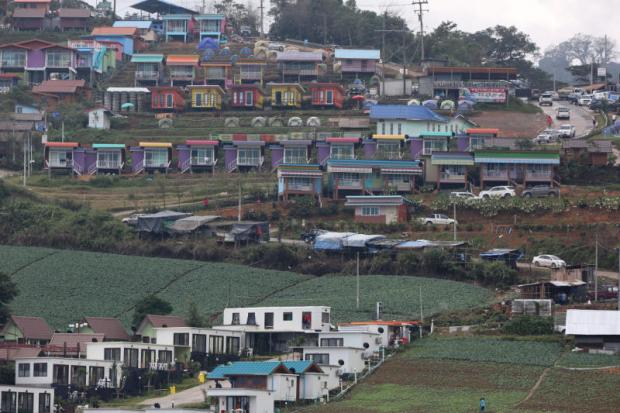
Phetchabun: The government will permit 50 members of Hmong ethnic group living on Phu Thap Boek in Phetchabun to maintain their resort after a previous order to demolish the settlements.
However, 53 other resorts have been deemed "outsider encroachers" whose buildings are scheduled to be demolished, Phetchabun governor Phibun Hatthakit Koson said. He added he will aim to get the job done by May.
The mountain in Lom Kao district has been patrolled by the army for several years, but they plan to cease duties to the Royal Forest Department halfway through this year this after some illegal resorts have already been cleared.
The demolition was ordered by Prime Minister Prayut Chan-o-cha in 2016 after invoking Section 44 of the interim charter. Vast swathes of the mountain were originally reserved for the resettlement of Hmong people. However, many of them were later accused of leasing their land to outsiders, who turned the plots into tourist resorts.
Resort owners and Hmong people asked officials to delay the demolition. Some owners, supported by former Democrat MP for Phetchabun Yupparat Bang-in, claimed the order was unlawful.
The Social Development and Human Security Ministry asked the cabinet to consider relaxing the order to allay the concerns of Hmong residents, who own 50 resorts altogether.
An inspection conducted of all 103 resorts in the area confirmed they indeed belonged to the Hmong people. Accordingly, Mr Phibun says: "They should be granted leniency."
Another 53 resorts are, however, still subject to demolition. Forty-two in this group have been already removed, he said.
Of these, five claiming to be Hmong members have petitioned officials to conduct a second inspection. Another six resort owners are planning to knock down the resorts themselves.
Given the sensitivity of the issue, it would be good to solve the problems through talks and negotiations rather than exercising only harsh legal approach, said Lt Yutthasak Singkharat, the chief of a military unit tasked with regulating land use on Phu Thap Boek.
However, resort owners who broke a law cannot avoid punishments, Lt Yutthasak stressed.
Phu Thap Boek resident Ma Wongthapboek said many Hmong people previously took out loans to invest in the resorts after they were advised to embark on the business during a visit by former tourism and sports minister Kobkarn Wattanavrangkul in October 2015. The ministry wanted to promote the mountain as a model for ecotourism, he said.
After 3,500 Hmong families were granted the right to settle on the mountain in 1966, the move was seen as a way to make best use of the land. The government also used land allocation as a means to tackle the communist insurgency by improving the people's quality of life.
Piyawat Sae-Thao, whose father decided to turn his back to the now-defunct Communist Party of Thailand, said he and his neighbours agree to comply with state laws in order to continue his resort business.
"We're ready to pay taxes -- we now want to pay it," he said. He added, however, that he wanted assurance from the government they have right to stay there.

Piyawat: Ready to comply with law